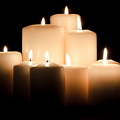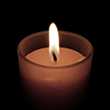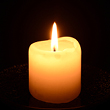SIEGFRIED SASSOONNo other poet described the carnage and futility of the Great War as powerfully as Siegfried Sassoon who died on 1 September, 1967 aged 80.
While critics have argued that the poetry of his contemporaries and friends Robert Graves and Wilfred Owen is more accomplished than Mr Sassoon’s, few would dispute the raw emotion and political importance of his work.
Prior to enlisting in the army, he enjoyed the privileged lifestyle of a young country gent but on reaching the front, fired by patriotism, he proved himself a formidably brave soldier.
He soon became disillusioned with the war and in particular the senior military officials whose incompetence and heartlessness was leading, in his eyes, to the loss of millions of lives.
Siegfried Loraine Sassoon was born on 8 September, 1886, in Weirleigh House in the village of Matfield, Kent. His father Alfred, an extremely wealthy Jewish merchant, separated from his mother, Theresa, when he was five years old.
He was educated at New Beacon Preparatory School in Kent, Marlborough College, Wiltshire and Clare College, Cambridge where he studied law and history. He did not complete his degree and returned to the family seat to enjoy a rural idyll of hunting, cricket and socialising.
His one serious enthusiasm was poetry and he privately published a few volumes of poems to little critical acclaim. In 1913 he achieved his first success with “The Daffodil Murders,” a subtle parody of John Masefield’s “The Everlasting Mercy,” published under the pseudonym of Saul Kain.
On the eve of the First World War he joined the Sussex Yeomanry but broke his arm in a riding accident and spent much of 1915 convalescing. In November of that year, Mr Sassoon joined the Royal Welch Fusiliers on the Western Front.
The death of his brother Hamo at Gallipoli hit him hard and consumed with a desire for revenge he led his men on such reckless attacks on German lines that he earned himself the nickname ‘Mad Jack.”
After a period of retraining in England, Mr Sassoon returned to the front. He showed extreme courage at the Battle of the Somme and earned the Military Cross for saving several wounded men when under constant enemy fire.
But Mr Sassoon had become increasingly embittered with the war. He wrote “A Soldier’s Declaration”, an anti-war polemic, in 1917 and sent it to his commanding officer. He narrowly escaped a court martial and was sent to a hospital for the shell-shocked near Edinburgh.
In hospital he met Wilfred Owen. They formed a brief but intense relationship and both men produced a significant amount of poetry during their convalescence. Despite his misgivings, Mr Sassoon returned to action and fought in Palestine before returning to France.
His marriage to Hester Gatty in 1936 came as a shock to his friends who knew him to be a homosexual. The union produced a son, George, but predictably Siegfried and Hester divorced in 1945.
He spent the years after the war writing his six-volume autobiography which all contained wonderfully evocative passages. The first volume, Memoirs of a Fox-Hunting Man won the Hawthorden Prize in 1929 and remains the most notable of the series.
As he grew older, Mr Sassoon became more spiritual and he joined the Catholic Church in 1957, the same year he was given the Queen’s Medal for Poetry. His later years were happily spent playing cricket and in convivial visits to the village pub.
But it is for the intensity of his war poems like, “The Hero” and “Base Details” that Mr Sassoon will always be remembered. As his Times obituary said at the time: “The depth of tragic feeling in them was not surpassed by any of the other war poets.”
Keep me informed of updates





